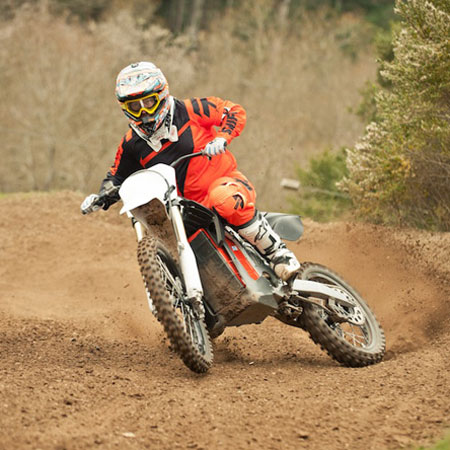
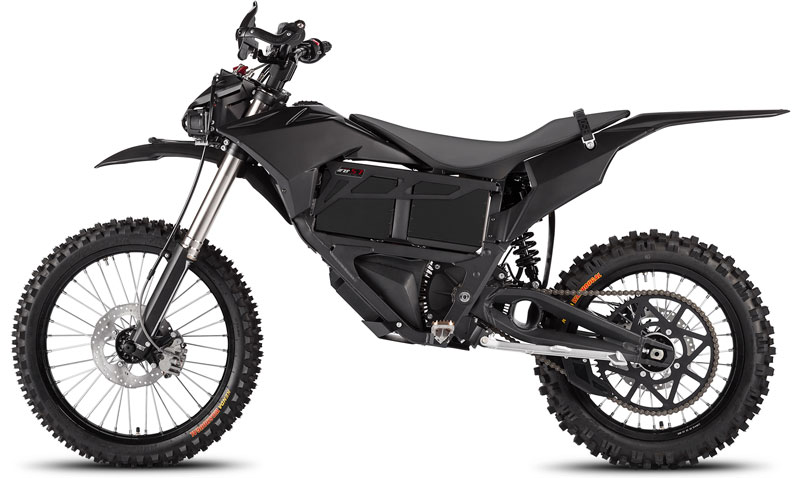

The introduction of 100% electrical powered and hybrid-electric bikes has the potential to bring the bikes back to the military focus, especially with special operations forces (SOF), where their speed and stealth are of utmost value.
For their low cost, high mobility and efficiency, bikes have become a popular tool in irregular warfare. Used by insurgents, bikes enable insurgents to outpace the military ‘sensor to shooter’ cycle (also known as OODA loop).
Gold members have access to the full article
Motorcycles were widely used by all sides during the first and second world war. During the great war, during WW II hundreds of thousands of bikes were produced and used in all theatres, primarily for liaison, communications, and transportation. After WW II the popularity of military bikes diminished. These huge wartime orders have never returned. In 1981 the US Army selected a new type of motorcycle, for off-road mobility, buying 2,500 examples from Hayes, the majority being Kawasaki KLR650s that Hayes modified for military use.
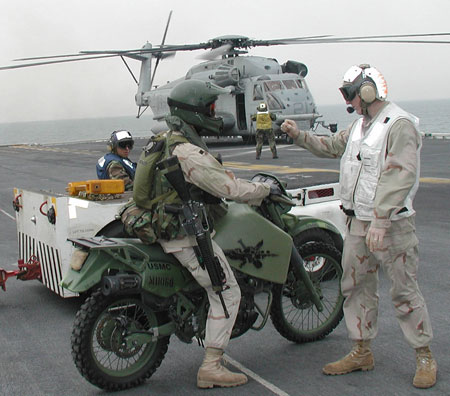
Most motorcycles manufacturers consider petrol engines as the only option for propulsion. This poses significant challenge in the diesel-oriented military economy. To exploit the military transition to diesel Hayes also developed a diesel Known as the Hayes’ 1030 the vehicle used the same Kawasaki KLR650, converted to take Hayes’ powered variant of the KLR650, known as Hayes 1030. These bikes can run on can run on seven different fuels, including diesel, biodiesel, JP8 aviation kerosene and other military fuel variants. Over the last 10 years the Marine Corps, who paid for the development, have bought only 211.
Bikes are often the only type of vehicle than can be carried on assault helicopters and, when flown by V-22, Chinook or CH-53, deploy safely straight off the ramp. While offroad bikes are tough, military bikes are built even tougher, some are even dropped from helicopters on deployment. For the average military user, a diesel powered motorcycle would be sufficient for mobility, fuel economy, weight and range, but when it comes to special operations, the noisy bikes become is a liability.
Another model enhanced to meet the growing military interest in dirt bikes is the ChristiniAWD Military Edition based on the company’s AWD 450 E or DS models. These can be tailored for off-road or highway. According to Christini, these special edition bikes are used by the Navy Seals and Special Forces groups overseas, as well as other branches of the military. It features a liquid cooled 450cc four-stroke engine, and an all wheel drive system that provides additional traction, handling and stability.
Christini is also offering customized military training as part of its partnership with Fayetteville N.C. based Tactical Mobility Training, where founder, James King, is operating a training regiment to develop and mentor operators that utilize light mobility platforms to penetrate deep within the enemy’s territory. Personnel from SOCOM, Army, Navy, Air Force, Marines, and British Special Forces have already took these courses.
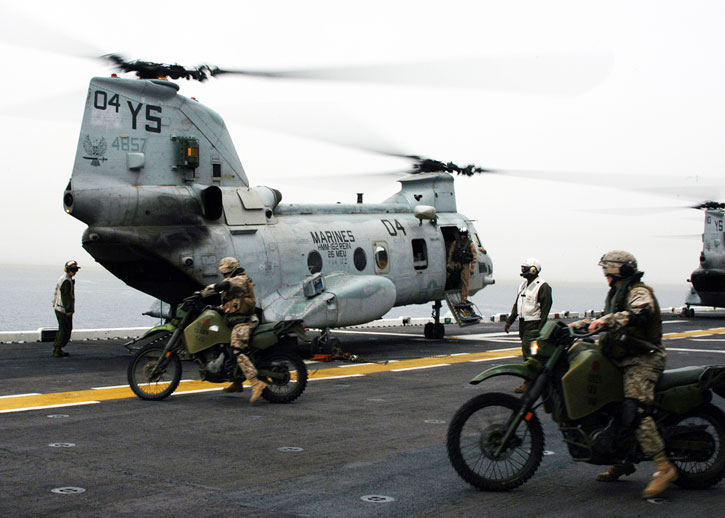
Electric powered motorcycles are promising a unique and stealthy solution (listen and see video), Adapting electrical propulsion and high power density batteries developed for hybrid and commercial 100% electric propelled vehicles, electrically powered motorcycles are promising new capabilities for special ops.
In 2013 Zero Motorcyclesintroduced a special military model of its Zero FX electric bike called ‘Zero MMX’, designed specifically for special operations. Apparently, the US Special Operations Command has already ordered some of those bikes for evaluations. Packing speed, off-road ruggedness and stealth, the MMX has what it takes to move special ops. Its main advantage is the quiet propulsion – it is powered by an electrical motor feeding on a high capacity lithium-ion rechargeable battery, supplying sufficient power for a relevant mission.
Stealth is an important attribute of the electric bike and the Zero is indeed absolutely silent when stopped. It is barely audible while on the move, and puts out a minimal heat signature to keep operators undetected. The MMX was introduced last year and received minor modifications and updates in 2014.
By militarizing their motorcycle Zero has sealed all sensitive systems, enabling the MMX to operate in wet or rainy conditions at water levels up to one meter deep (3.2 foot). The bike comes already wired to take infrared lights on the front and tail. The military model is fitted with safety override and reserve power enabling the rider to extract the maximum potential in extreme, life threatening situations.
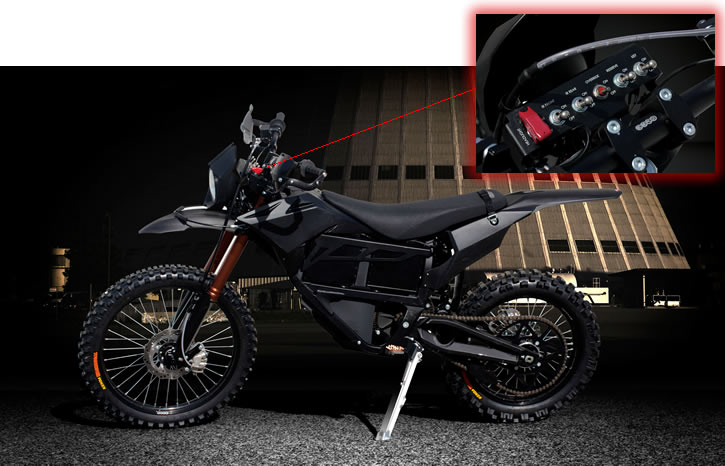
What if your mission would last much longer than two hours? you can’t top up an electric motorcycle at the nearest gas station. That’s where the Defense Advanced Research Projects Agency (DARPA) came in. In February 2014 the agency awarded a $100,000 contract for preliminary design of a hybrid-electric stealthy motorcycle for the military. The idea is to combine the stealthiness and speed of the all-electric power train with the energy efficiency of internal combustion engine-generator, resulting in extended missions and more flexibility in field use.
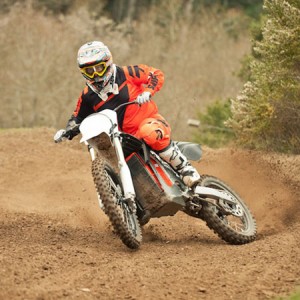
The feasibility study is managed by Logos Technologies, a Research and Development (R&D) contractor working closely with DARPA and other government agencies, and utilize the RedShift MX hybrid powered bike platform provided by BRD. “With a growing need to operate small units far from logistical support, the military may increasingly rely on adaptable, efficient technologies like this hybrid-electric motorcycle” Wade Pulliam, manager of advanced concepts at Logos Technologies noted. “Quieted, all-wheel-drive capability at extended range in a lightweight, rugged, single-track vehicle could support the successful operations of U.S. expeditionary and special forces in extreme terrain conditions and contested environments” Pulliman added.
The hybrid power pack could be used to support the warfighter in more than mobility, speed and stealth. It also provides an integral power generation source, providing teams with electrical power to recharge batteries, or run appliances, such as satellite links and networks.
For its base platform, the project relies on an existing racing bike, the RedShift MX, a 250-pound all-electric motorcycle that will be fitted with a small internal combustion engine generating the power to drive the main engine and recharge the battery. The study will provide the data for tradeoff analysis determining the size of the engine and associated fuel tank.

Similar to the Zero, the RedShift MX has a two hour range. The hybrid system will extend its mission endurance much further. While the system would optimize on stealth, rather than mission endurance, but the addition of hybrid power train is expected to significantly increase the vehicle’s mission endurance.
In the past DARPA has also explored the use of unmanned motorcycle, one of the early designs, Yamaha 90cc racing motorcycle called Ghostrider was turned into a robot motorcycle that could drive itself. The Ghostrider participated in the DARPA Challenge of 2004 and 2005 but this path hasn’t moved on, as follow-on developments focused on unmanned all-terrain mobility opted for the four-wheel ATVs and legged platforms. The Ghostrider is now presented at the Smithsonian National Museum of American History.






















